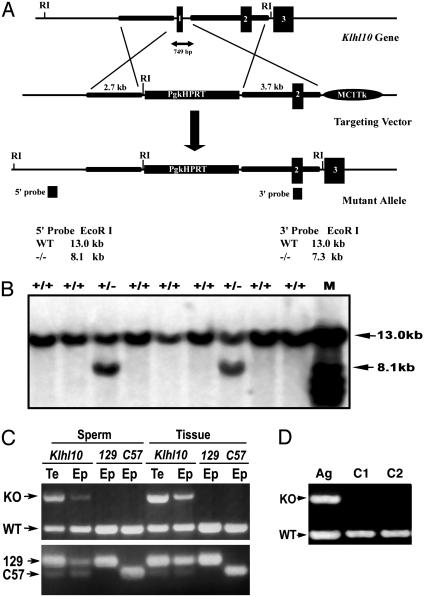Fig. 3.
Targeting of the mouse Klhl10 in ES cells and genotyping analysis for Klhl10 chimeric and heterozygous mutants. (A) Klhl10 genomic locus and targeting vector for generation of a Klhl10 null allele. A deletion of exon 1 (containing the start codon) of the Klhl10 gene was achieved by homologous recombination in AB2.2 ES cells; 5′ and 3′ probes were used to distinguish WT and mutant alleles by Southern blot analysis on EcoRI-digested genomic DNA. (B) Southern blot analysis of ES cells electroporated with the targeting construct. In addition to a 13-kb WT band, a 5′ external probe detects a 8.1-kb band corresponding to the mutant allele in two ES cell clones. M, molecular weight marker. (C) Genotyping analyses of Klhl10 chimeric and heterozygous males. Sperm DNA was isolated from the testis (Te) and epididymis (Ep) of a high-percentage Klhl10 chimeric and control WT mice (129S6/SvEv and C57BL/6J strains) by using a differential digestion method (15). (Upper) PCR was performed to detect WT allele and knockout (KO) allele. (Lower) PCR was performed to detect a polymorphic locus D2Mit94, which displays a 194-bp band for the 129 strain and a 160-bp band for the C57 strain. (D) An agouti (Ag) male pup from a female chimera is heterozygous (Klhl10+/-), as indicated by PCR genotyping analysis. Two WT mice were also analyzed as controls (C1 and C2).

